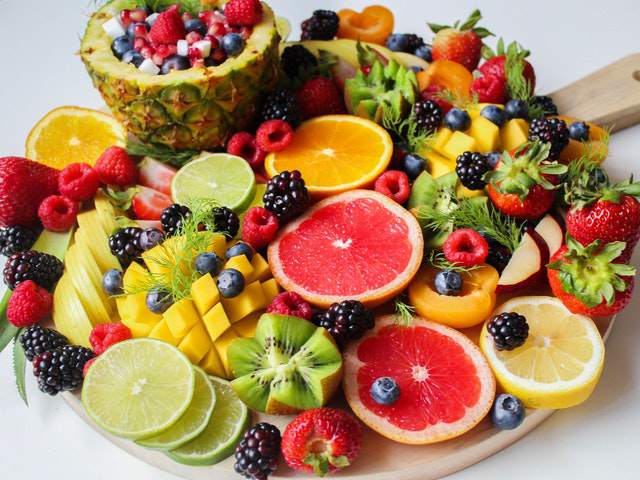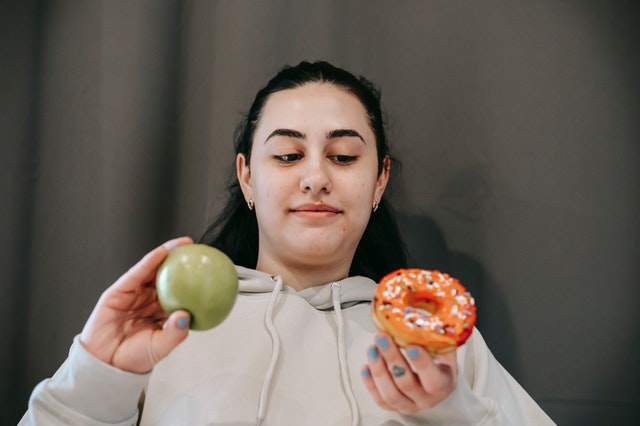fruits with the least calorie Register
If all fruits (and vegetables) are good for your health, because of their richness in vitamins, minerals, fiber, and antioxidants, it is not always easy to find the best choices for your line. And unfortunately, the calorie chart is not written on fruit! Here is the selection of the fruits with the least calories and some advice to help you enjoy all their virtues.
Top 15 Least Caloric Fresh Fruits

Each fruit has its own nutritional qualities, which is why it is important to vary your fruit (and vegetable!) consumption by always choosing seasonal vegetables to get the most out of their health benefits. But as not all fruits are equal in terms of caloric intake, here is a selection of the 15 fruits with the least calorie and the least energy:
Watermelon: 30 kcal/100 g
Composed of 92% water, watermelon is one of the least caloric fruits although its flavor is sometimes very sweet. It is rich in magnesium, copper, vitamins A, B5 and B6. If it is cut, be sure to eat your watermelon within 4 days to take advantage of the virtues of its lycopene, its famous anti-oxidant, also present in tomatoes.
Strawberries: 33 kcal/100 g
Rich in phenolic compounds, strawberries are a fruit with a very powerful antioxidant capacity and would have a protective effect against cancer. The antioxidant capacity of strawberries is also very interesting when they are consumed in the form of jam. So choose a quality strawberry jam, preferably 100% fruit, for your breakfasts!
Redcurrant: 33 kcal/100 g
The currant is a fruit that contains an interesting amount of potassium, antioxidants and Vitamin C. It is also rich in pectin, a fiber that is said to have many health benefits, including lowering blood cholesterol levels and blood sugar levels.
Raspberry: 35 kcal/100 g
Rich in vitamin C, raspberries have a very high antioxidant power. However, to take advantage of their benefits, avoid freezing them because very low temperatures damage both their vitamins and their antioxidants.
Melon: 35 kcal/100 g
Made up of 90% water, melons are particularly refreshing. Keep it in the refrigerator, whole (rather than cut): it will lose much less of its nutritional value.
Grapefruit (pomelo): 35 kcal/100 g
Grapefruit is a fruit that contains an exceptional amount of vitamin C and antioxidants that have multiple health benefits, particularly with regard to the risk of cancer and cardiovascular disease. To get the most out of this fruit’s antioxidant properties, choose pink or, even better, red grapefruits!
Peaches and nectarines: 38 kcal/100 g
Summer fruits par excellence, peaches and nectarines are rich in sugar (but not necessarily caloric) if they are picked when ripe. They are also rich in vitamins, fiber and anti-oxidants, which are mainly contained in the skin. So eat your peaches and nectarines whole, with their skins, after washing them well.
Orange: 40 kcal/100 g
Oranges are known for their exceptional vitamin C content. Oranges are best eaten as whole fresh fruit or as homemade juice. But if you choose an industrial fruit juice (100% pure juice, with no added sugar), consume it 3 to 4 weeks before the expiry date written on the packaging to benefit from its virtues.
Apricot: 44 kcal/100 g
Rich in fiber, antioxidants and Vitamin A, apricots are best eaten in combination with (good!) fat. Indeed, carotenoids, including beta-carotene which gives it its orange color, are better absorbed in the body when a small amount of fat is consumed at the same time. The ideal: eat oleaginous fruits (almonds, walnuts, hazelnuts, etc.) at the same time as your apricots!
Plums: 44 kcal/100 g
The water contained in 82.5% of plums is loaded with minerals and trace elements, especially potassium, iron and magnesium. Fresh, in juice or dried (prune), the plum is always rich in antioxidants and vitamins, especially of the B group.
Tangerine: 45 kcal/100 g
The mandarin is an excellent source of vitamin C. In winter, it is the anti-fatigue fruit par excellence! Easy to carry in your bag, it can be eaten in any circumstance, at the end of a meal or even for an improvised snack. You will fill up on Vitamin C, but also Vitamin A and anti-oxidants.
The medlar: 45 kcal/100 g
Not very widespread, the medlar is nevertheless an interesting fruit, in particular for its richness in vitamins: it is the champion of the Vitamin A. It also offers an interesting rate of beta-carotene which, thanks to its antioxidant properties, helps the skin to protect itself. Think of consuming it to prepare your skin for the first sun exposure.
Pineapple: 50 kcal/100 g
A tropical fruit par excellence, pineapple can be found on supermarket shelves all year round. Very rich in manganese, it contains bromelain, which facilitates digestion and has many beneficial effects on blood circulation.
Apple: 50 kcal/100 g
Apples are a good source of antioxidants and dietary fiber. However, the amount of antioxidants and its vitamin and mineral content vary according to variety, ripeness and processing (storage, cooking, juice extraction). To be safe, always choose red apples because they are generally richer in antioxidants than light-colored apples. Wash them but avoid peeling them!
Pear: 50 kcal/100 g
Rich in fiber, pears are also very high in vitamins and antioxidants. Prefer fresh pears and if possible organic ones, as organic farming allows the fruit to develop its antioxidant defences against pathogens.
Top 10 Least Caloric Dried Fruits
If fresh fruits are real treasures of vitamins, minerals and anti-oxidants, oleaginous fruits and dried fruits are no less interesting. Easy to take with you at any time, they are an excellent alternative for a quick snack on the go.
Oilseeds:
Oilseeds often have a bad reputation because of their fat content. However, most of them are really interesting because they certainly provide fat, but they are good quality fatty acids, which protect your arteries. Among the oleaginous fruits, pistachios, cashews and almonds are the most interesting compared to other nuts and seeds. They are indeed a little less caloric but they contain more proteins and dietary fibers and are therefore more satiating. An interesting asset to fill the small hungers!
- Pistachios: 160 kcal/serving (30 g) = 45 pistachios
- Cashew nuts: 160 kcal/serving (30 g) = 20 cashew nuts
- Almonds: 170 kcal/serving (30 g) = 20-25 almonds
- Hazelnuts: 180 kcal/serving (30 g) = 20 hazelnuts
- Walnuts: 185 kcal/serving (30 g) = 14 halves
Dried fruits:
Dried fruits are on average 2 to 4 times richer in calorie than their fresh fruit equivalent, except for raisins. But the good news is that we can always adapt our consumption: we are generally satisfied with a handful of 30 g of dried fruit, whereas for a fresh fruit, we often consume a portion of 100 and 250 g depending on the fruit.
With dried fruit, you gain in the calorie balance!
- Figs: 60 kcal/serving (30 g) = 3 medium figs
- Prunes: 72 kcal/serving (30 g) = 3-4 prunes
- Dried apple: 80 kcal/serving (30 g) = 5 apple pieces
- Dried apricots: 80 cal/serving (30 g) = 8 apricot halves
- Papaya: 100 kcal/serving (30 g) = 2 pieces of papaya
Raisins provide 110 kcal/serving (30 g), which is about 1/4 cup.
If you know more informations about calorie like these, Share them with us.

